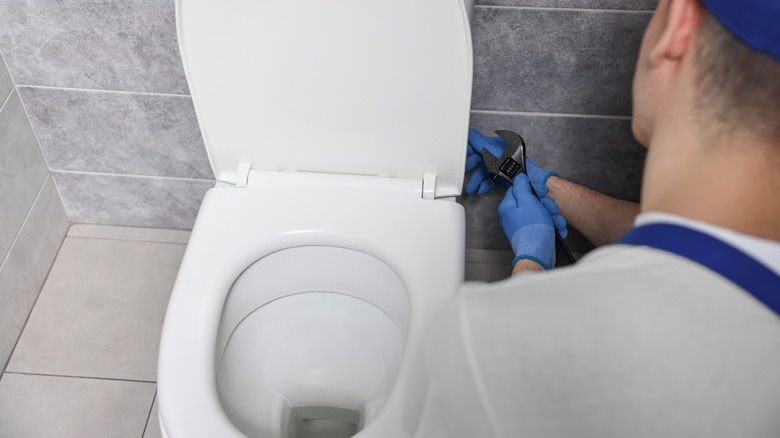Why Resetting A Toilet Could Save You More Than You Think
Noticing a little water pooling around the base of your toilet may not seem like a huge deal, but ignoring the water leak could lead to much bigger problems than wet socks. At the base of most toilets, where the bowl meets the floor, there is a flange that connects the toilet to the drainpipe. In the center of this flange is a wax seal (or a rubber gasket) designed to make a watertight fit between the toilet and the pipe. Seals and gaskets can break down over time and cause water, or even sewer gas, to leak into your home. Unresolved leaks cause mold, damage flooring, and can trickle down to the ceiling of the level below. These are all very expensive problems to address. For example, mold remediation costs over $2,000 on average, while ceiling restoration can set you back between $1,400 and $6,000. The good news is that you can avoid these repair costs by replacing the wax seal. This task is known as "resetting the toilet" and requires about 10 minutes of work.
Before you reset the toilet, make sure that the faulty wax seal is the cause of the leak. Loose bolts and a broken supply valve are other reasons your toilet won't stop leaking, and these do not require the toilet to be reset. However, if the leak is present even though the bolts are tight and the valve works properly, it means you'll need to replace the wax seal.
Follow these simple steps to reset your toilet
Before we explain how to reset the toilet properly, here's a quick disclaimer. As with any project that may involve heavy lifting or basic plumbing, it's important to know when to DIY and when to call a pro. If any part of the instructions sound too difficult for your skill set, there is no shame in asking for help.
To reset the toilet, you'll need are a pair of pliers or a wrench to remove and tighten the bolts on the base and the water supply line, a wet vac or sponge and bucket to remove water from the toilet bowl, and a caulk tool or scraper. As YouTube content creator TrustThyPlumber demonstrates in the video above, the steps are very straightforward: turn off the water and remove the toilet, clear away the remnants of the old wax seal, install the new one, and re-secure the toilet while being careful not to over-tighten the bolts.
Whether you're a homeowner, landlord, or a renter, being able to perform this type of basic repair really comes in handy. The average hourly rates for professional plumbers performing this type of small job range from $125 to $350, with additional charges for travel and parts. So, save that call for more difficult repairs in the future.
